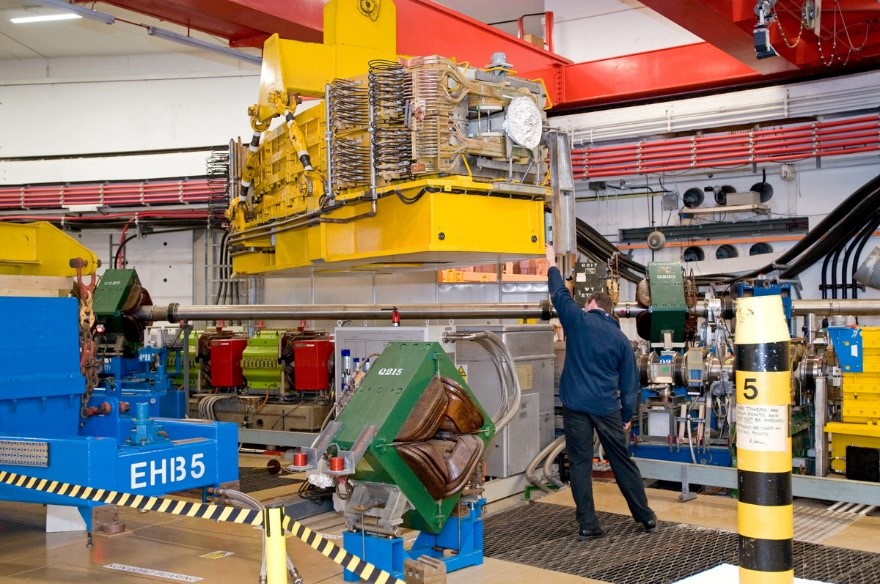The large dipole bending magnets used in the ISIS synchrotron are susceptible to failure, and each time this happens it takes a full day of ISIS closure to remove and replace the coils inside. Every dipole magnet is made up of two large coils, each made of many smaller copper coils wrapped in glass fibre tape, mica tape and then vacuum impregnated with epoxy resin to form the larger coil.
Any bubbles formed in this multi-layer insulating system can lead to partial discharges, which are essentially tiny sparks in the voids caused by the bubbles. These may, in turn, lead to electrical treeing, where an electrical path burns through the coil, ultimately causing a short circuit and leading to its failure. Although the bulk behaviour of charge carriers in the dielectric materials used is understood, their behaviour at an atomic level is still unknown. This atomic-level behaviour is crucial to understanding charge transportation and distribution, and the subsequent electric fields, and therefore to the prediction and prevention of magnet failure.
Unlike crystalline materials or metals, charge transport phenomena in dielectrics are hard to study, and this is before you subject these dielectrics to the conditions they face inside the magnets at ISIS. Ben Orton, an ISIS electrical engineer who is studying these materials for a PhD explains: “Everything we subject them to is bad for them; the heat, the vibrations, the radiation and the electrical conditions all impact their behaviour." This also makes detection of any small problems that could lead to failure very difficult: “we're looking for a pico-Coulomb change in a very noisy environment."
As well as using conventional analysis methods to study the dielectric materials, Ben and his collaborators have used the muon instrument HiFi to study them. Conventional bulk measurements show that there are charge carriers found in the material, but it was only using muons that they were able to show that some of these are electrons, and where these electrons are located.
 Now that they have found that it is electronic charges that are affected by the applied electric field, and that they can identify their location, the next question is what is actually happening to the charges to cause the shifts seen in the muon response. By comparing the results of the muon experiments, computer simulations and the bulk behaviour, the goal is to develop a detailed understanding of the charge type and distribution within the system, how it changes with the application of electric field, and how this behaviour is modified as the material ages. These data will influence both the design and operation of the magnets, and will go some way towards improving their performance and reducing the likelihood of failures. “At the moment it's as if we've opened the door a crack to let some light shine through, but it will be a long time until we're blinded by the sun shining in!"
Now that they have found that it is electronic charges that are affected by the applied electric field, and that they can identify their location, the next question is what is actually happening to the charges to cause the shifts seen in the muon response. By comparing the results of the muon experiments, computer simulations and the bulk behaviour, the goal is to develop a detailed understanding of the charge type and distribution within the system, how it changes with the application of electric field, and how this behaviour is modified as the material ages. These data will influence both the design and operation of the magnets, and will go some way towards improving their performance and reducing the likelihood of failures. “At the moment it's as if we've opened the door a crack to let some light shine through, but it will be a long time until we're blinded by the sun shining in!"
Image, right: a dipole magnet being lifted into place in the ISIS synchrotron.
Further information:
The full paper can be found at DOI: 10.1109/ICD46958.2020.9342014
